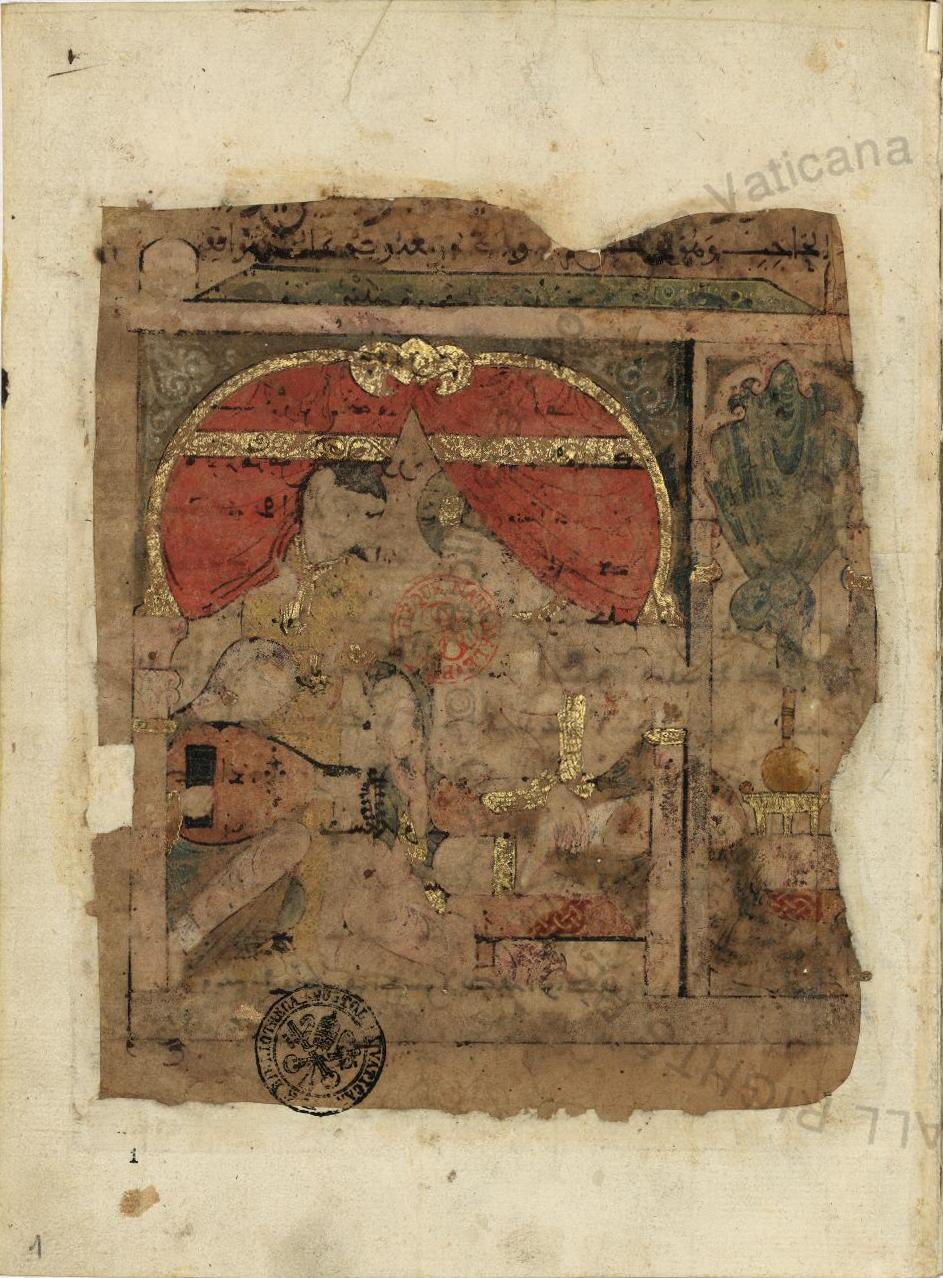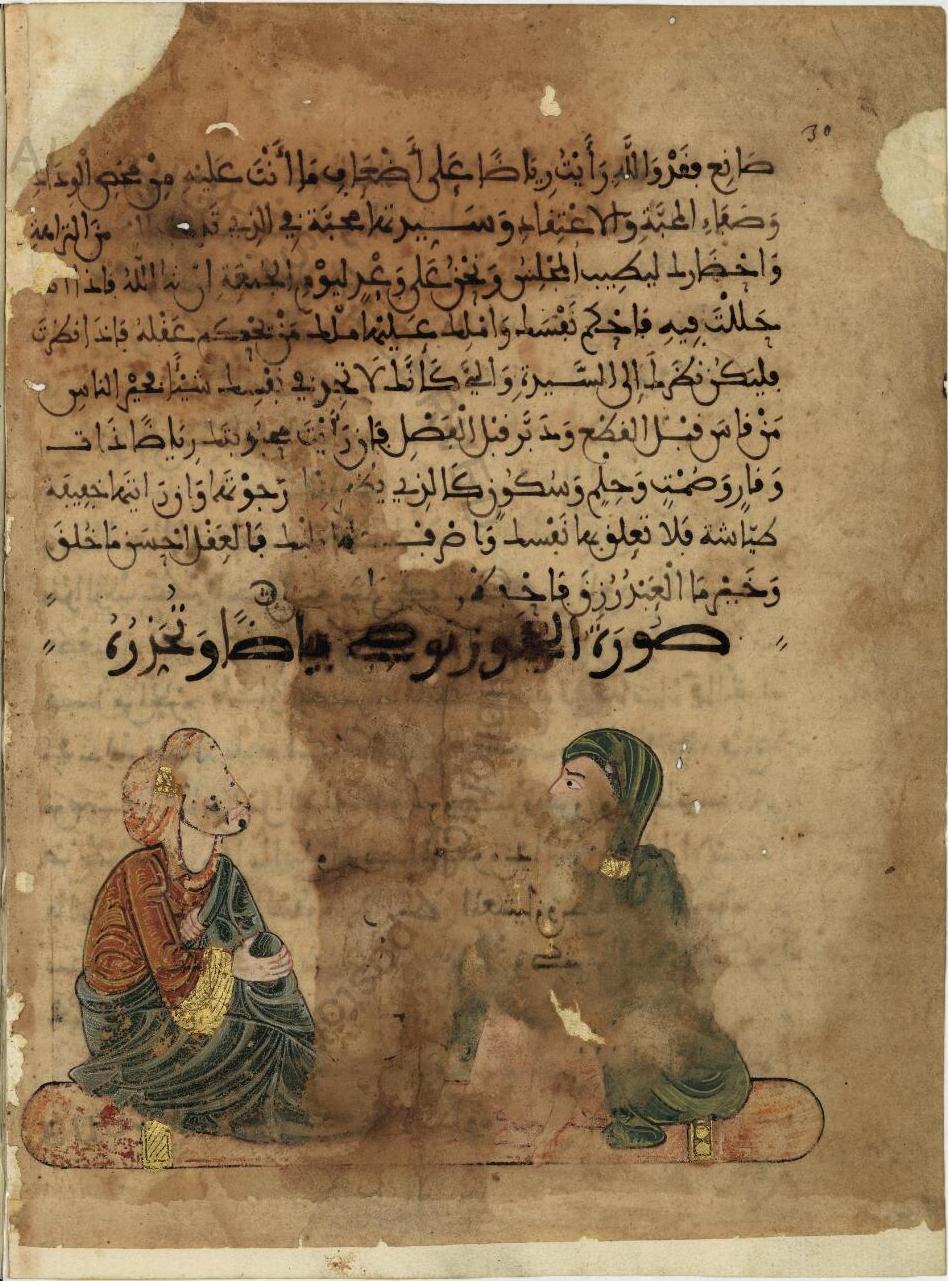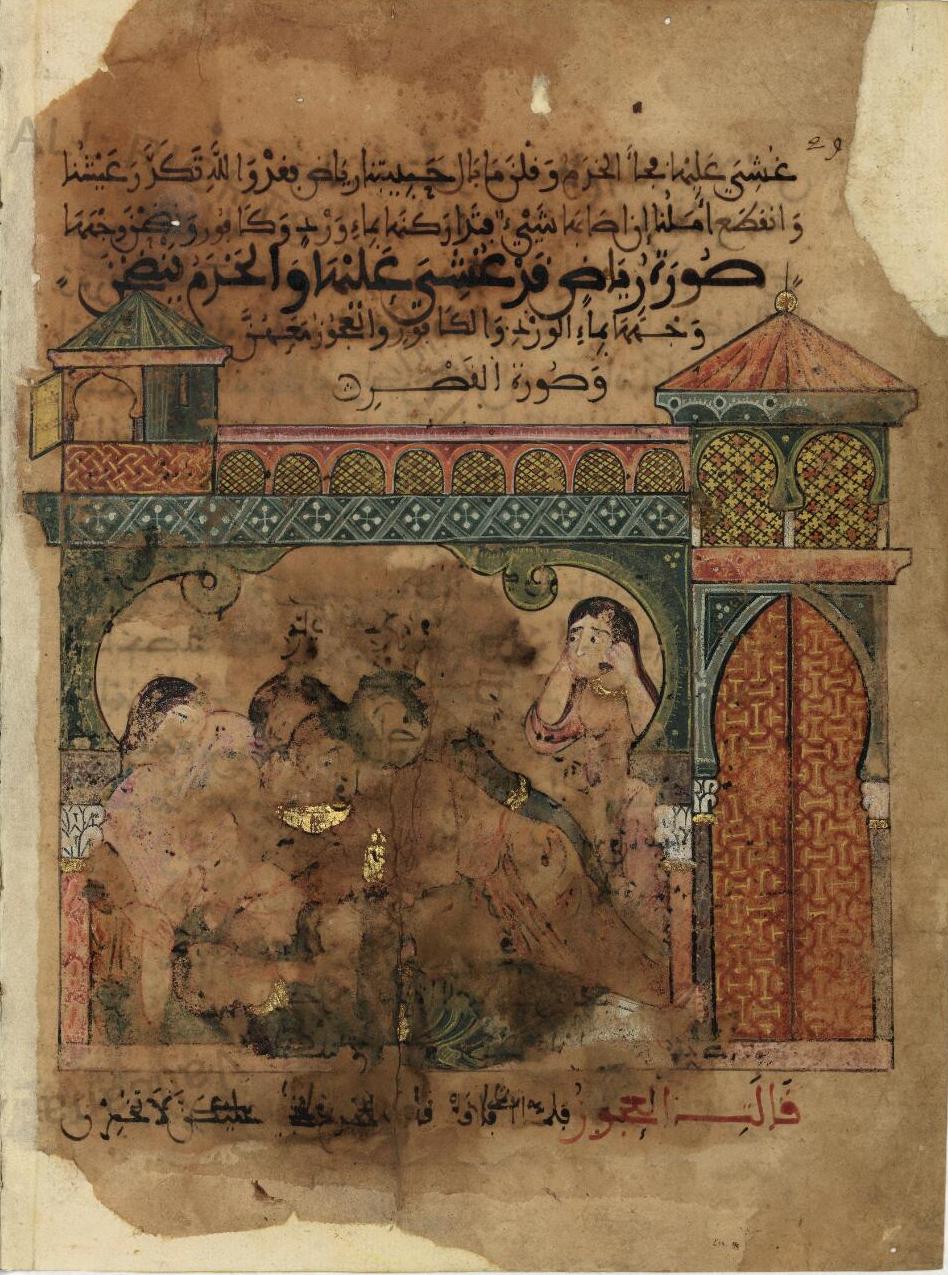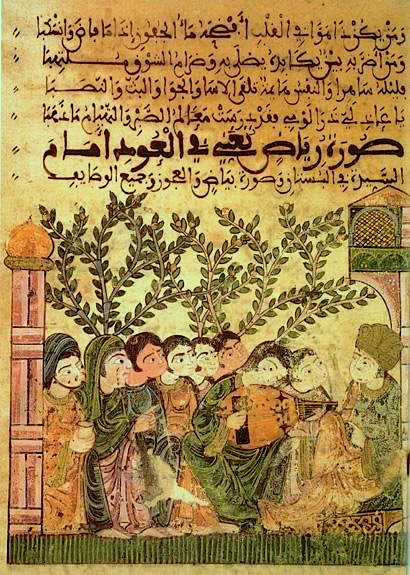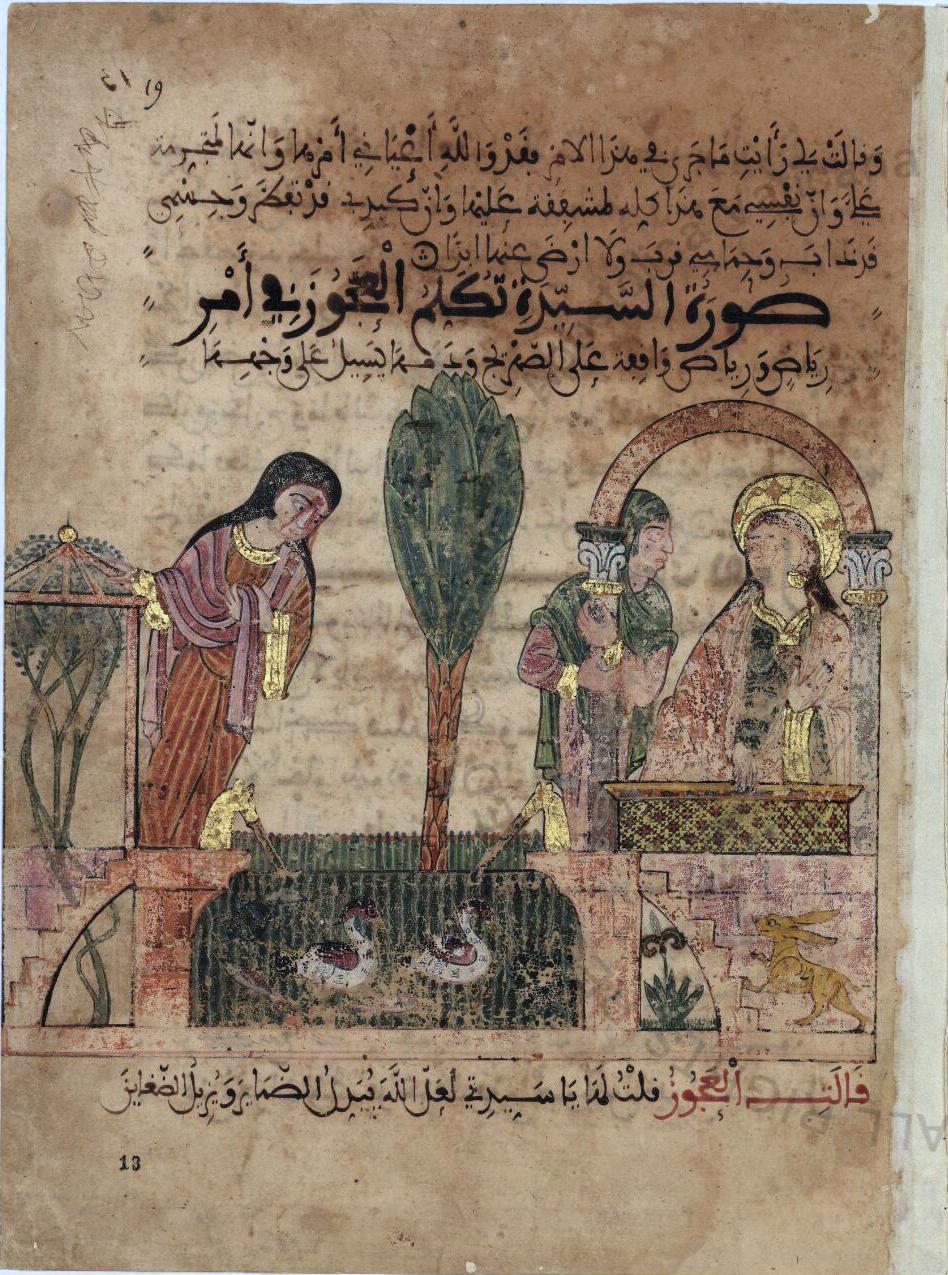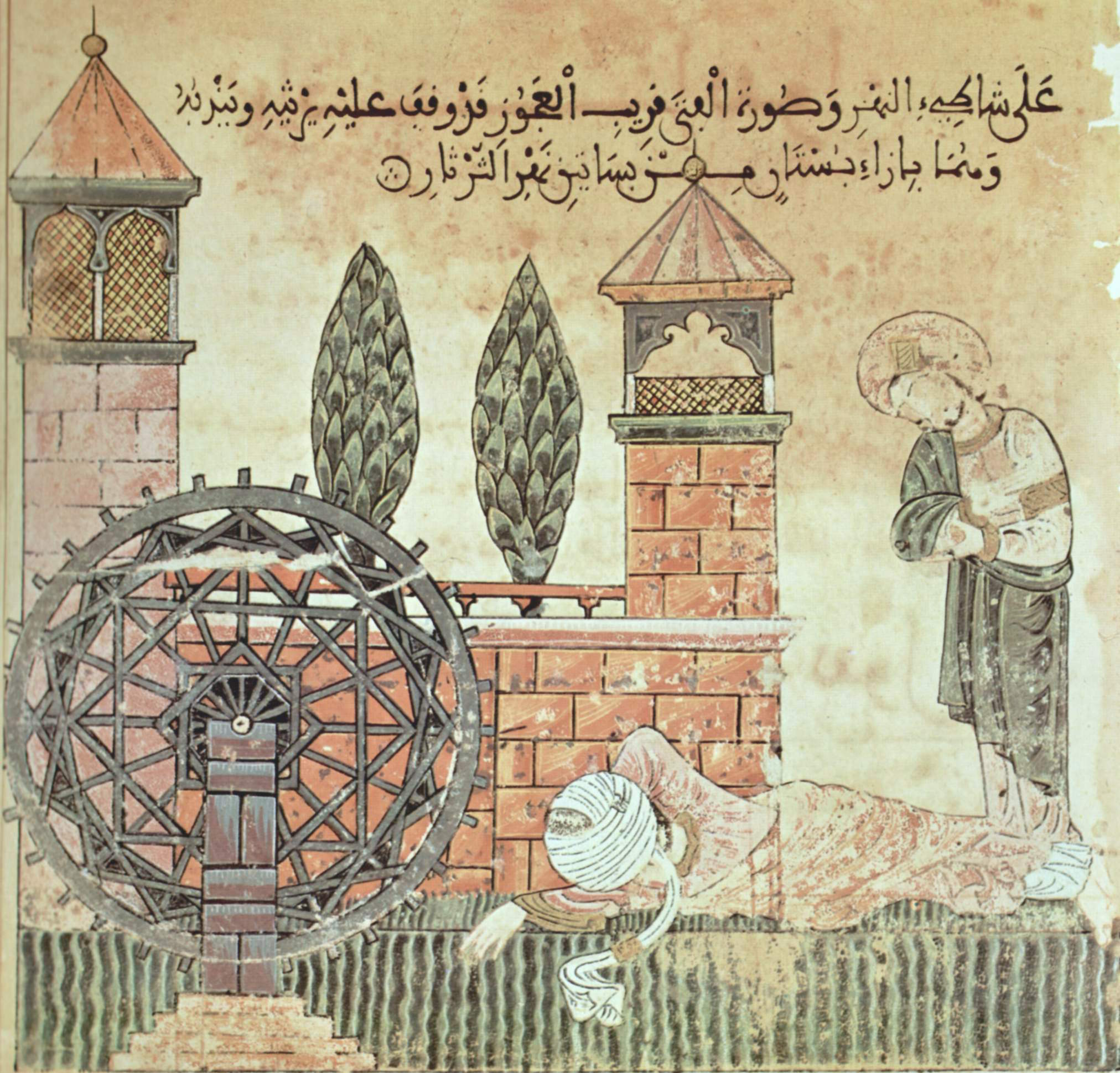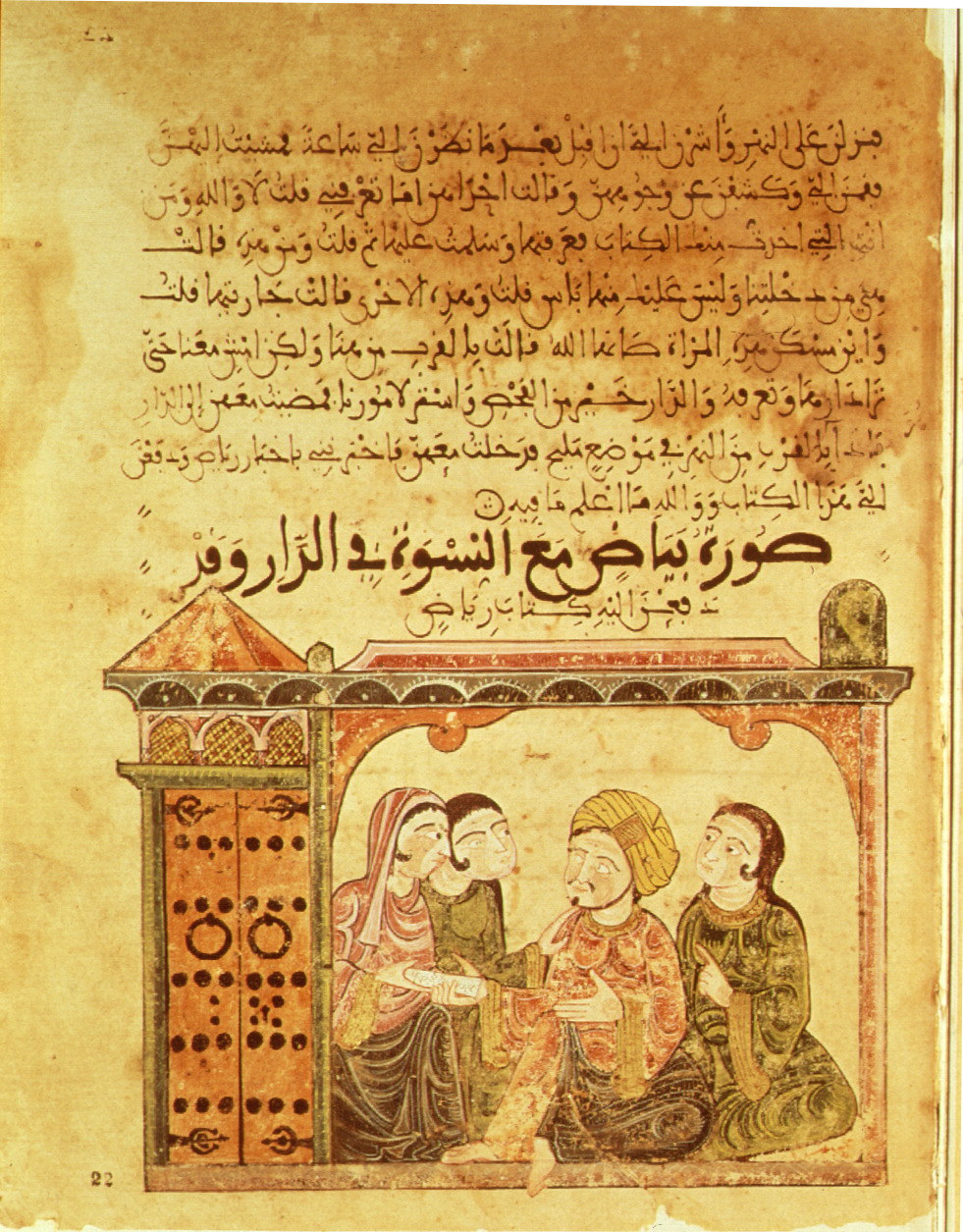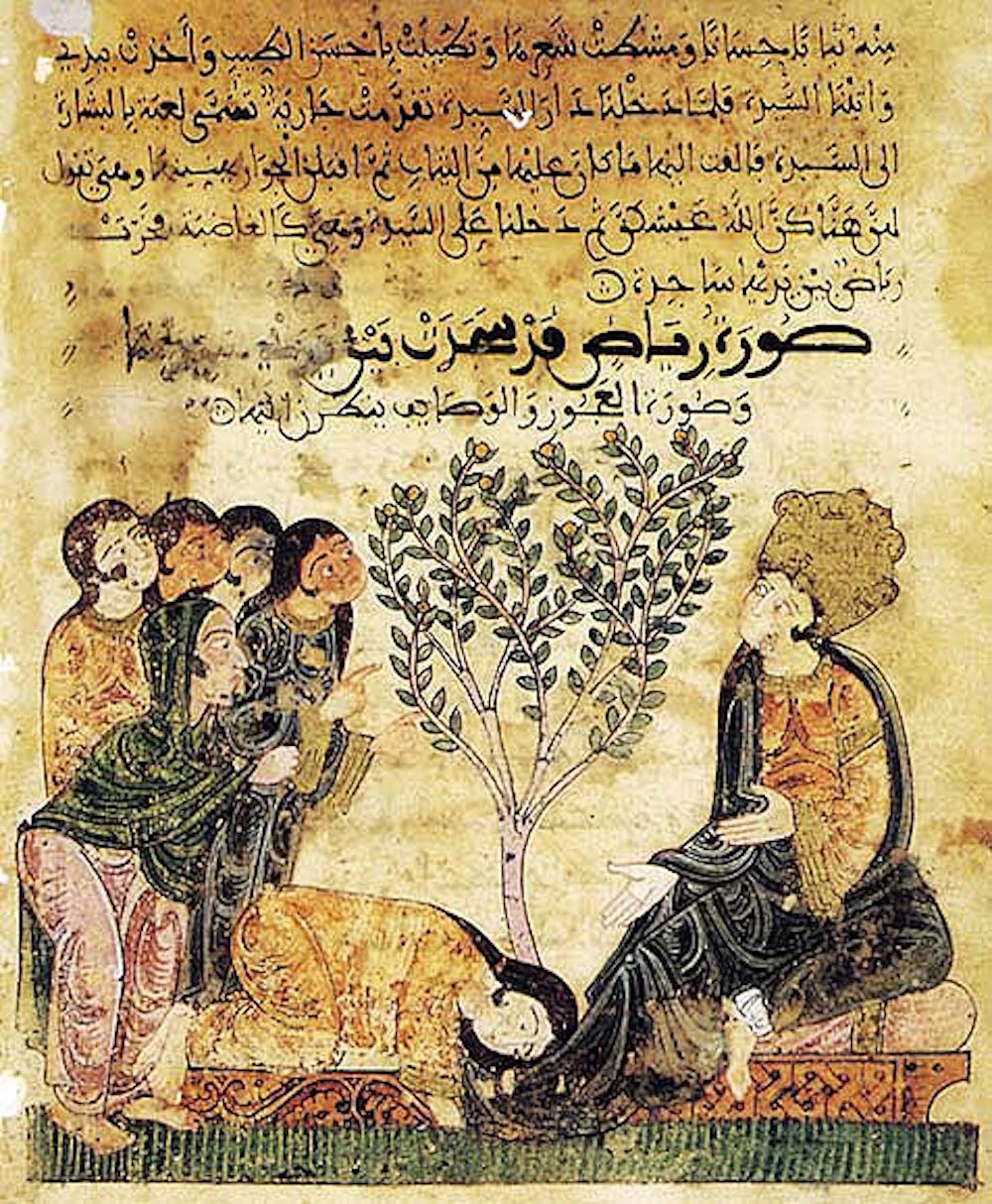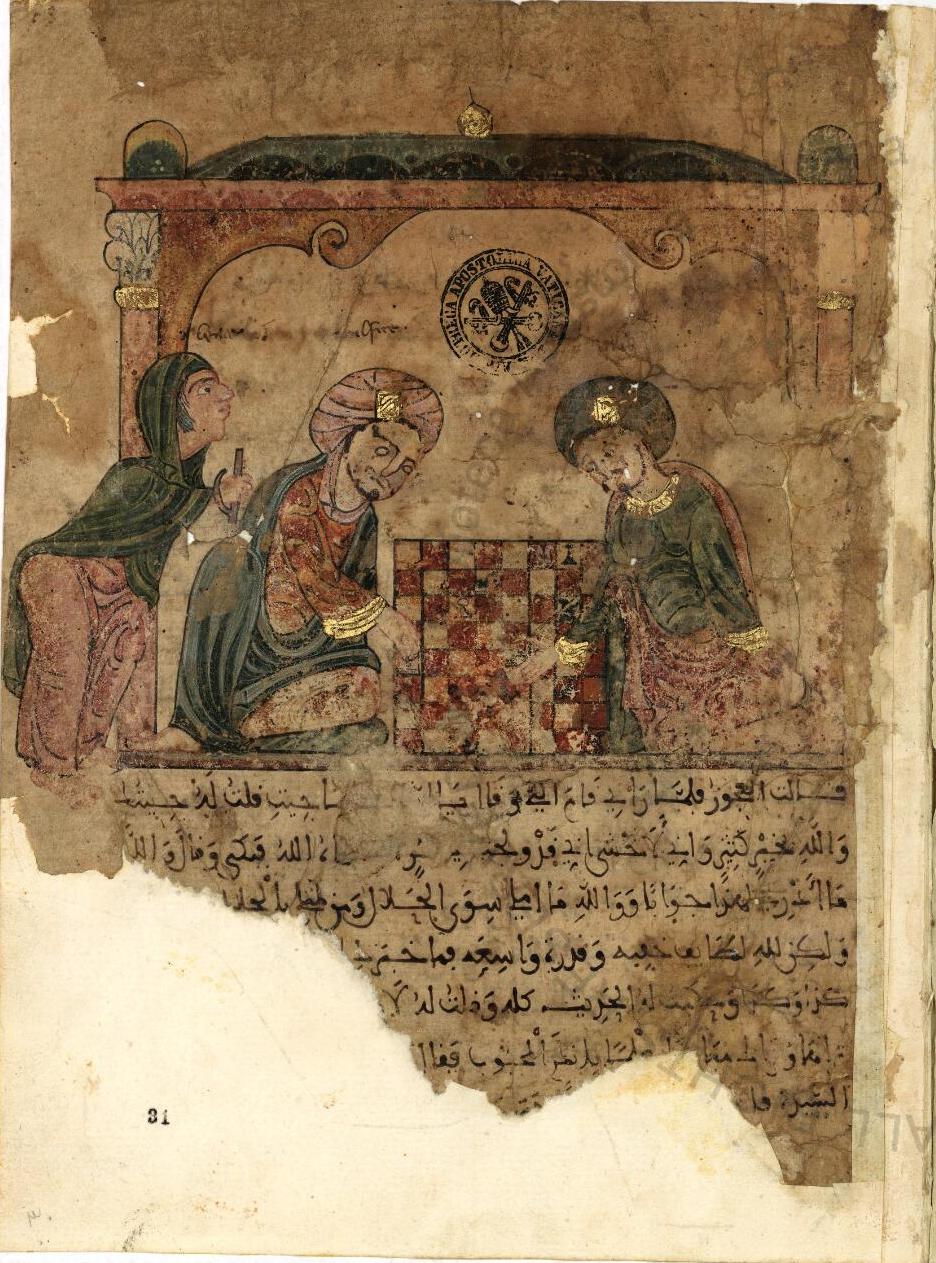The Story of Bayad and Riyad
Qissat Bayad wa Riyad
The Andalusis were highly literate and were well known for composing songs, poems, and stories, and for writing many books on manners, science, philosophy, and religion. But our knowledge of Andalusi manuscript illumination is unfortunately limited because large quantities of books suffered wholesale destruction in Spain on numerous occasions. During wars among Muslim groups, many collections of books were destroyed as "collateral damage". And in 1499 Cardinal Ximénez de Cisneros burned a veritable mountain of Arabic manuscripts in Granada on the assumption that anything written in Arabic had to be a Qur'an and therefore "a danger" to the Christian faith.
This wide destruction accounts for the absence today of manuscripts from western Dar al-Islam containing miniatures, compared to the relative abundance from Syria, Iraq, Persia, Mughal India, and the Ottoman Empire. In fact, only two illustrated manuscripts are known to have survived from te nearly 800 years al-Andalus existed. One is a copy of the treatise on astronomy by Al-Sufi (died 986); the second is the 13th-century love story titled after its hero and heroine "Bayad and Riyad". A third survives from after the Reconquista, a book of fables, "The Consolation of the Sovereign," illustrated by a Morisco, a Muslim converted (probably forcibly) to Christianity in the 16th century.
There is only one surviving copy of the story of Bayad and Riyad (Qissat Bayad wa Riyad in Arabic), which is now in the Vatican Library (Ar. Ris. 368). And it is the only illustrated manuscript to have survived from high medieval al-Andalus. Thus it is crucial to the history both of literature and of visual arts in the Iberian Peninsula, and it may also inform us somewhat on the clothing of the time.
The manuscript, apparently missing the first few and last few pages, is written in Maghribi script. It is reputed to have been taken from the city of Tunis by the troops of Charles V. For these two reasons, some scholars have assumed it is a North African manuscript. More scholars, however, believe it to have been copied in al-Andalus sometime during the 13th century, probably the first half. Scholars continue to debate in what city this happened, possibly Sevilla, possibly another.
The story is a romance, focusing on the love of Bayad, a merchant's son and a foreigner from Damascus, for Riyad, a well-educated slave girl in the court of an unnamed Hajib (vizier or minister) and his daughter, referred to simply as The Lady. Because the final pages are missing, we don't know how the story ends. Does it end in tragedy? Or do Bayad and Riyad finally get together?
While composed entirely in Arabic, the story of Bayad and Riyad is an example of a form of hybrid literature, just as much of Andalusi culture of the Middle Ages was hybrid. It was clearly inspired by Arabic literature both contemporary and classical. However, it also reflects themes similar to those popular in late 12th- and 13th-century romance literature composed in European vernaculars, such as the several languages of Iberia as well as Provençal. Thus the manuscript displays some of the complexities of 13th-century Andalusi culture, which scholars have yet to understand fully due, unfortunately, to the scant surviving examples of material culture other than architecture.
It is also an important source of information on Andalusi society itself. Most of the story is set in the palaces and gardens of a city in the 13th century. And within the story are frequent references to the culture of elegant society and the manners and habits of kings and nobles, so it could also have served as a book of manners. Additionally, throughout the book are love poems and songs, which suggests that it might have also functioned as a sort of songbook.
Some scholars think it belonged to a wealthy trader or some other member of the bourgeoisie. Illustrated manuscripts were expensive and this particular book must have been quite costly because it contains numerous images, many of which contain gold paint accents.
Here are the 15 illustrations in the surviving manuscript; many of them are damaged, 7 quite seriously. |
